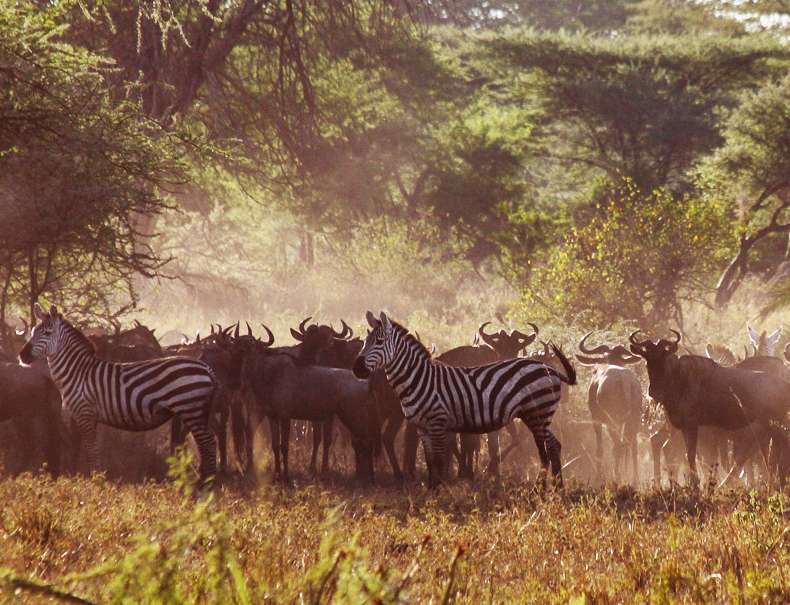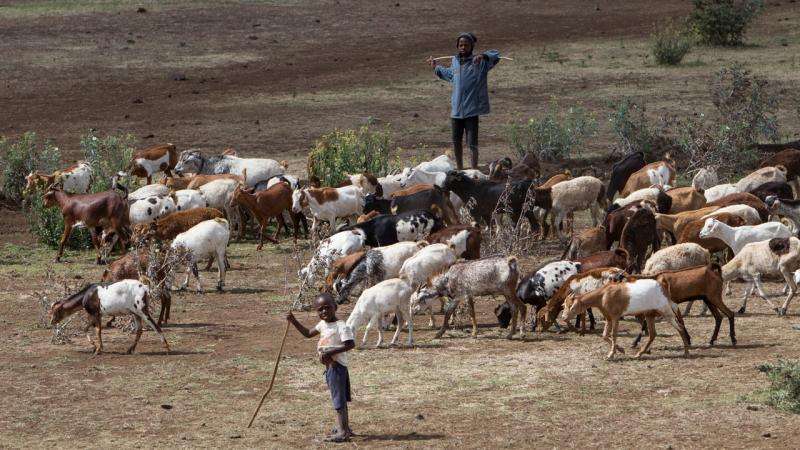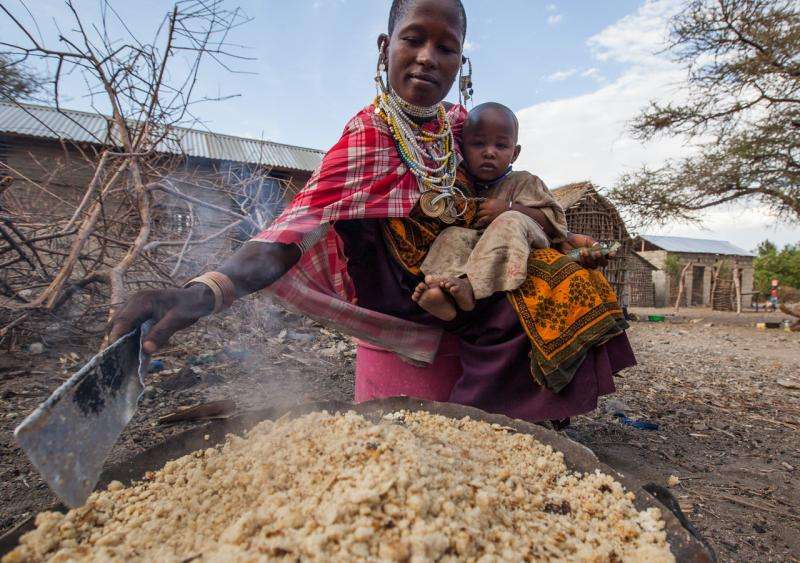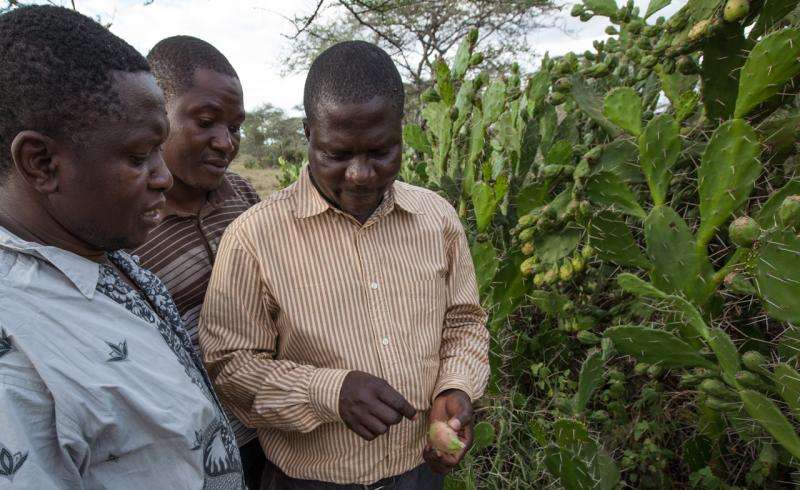Serengeti Park disappearing

A huge wildebeest herd migrates across the open, parched plains. Dust swirls up from the many hooves pounding the ground, and forms a haze over the landscape. The setting sun gives the scene a golden tinge.
The herd is heading towards one of the life-giving water holes, where wildebeest congregate along with zebra, gazelles, antelopes, elephants and other species of the abundant animal population that live in the Serengeti and make the area unique.
An image of Africa
This iconic image of the national park is far from guaranteed in perpetuity. Serengeti means "endless plains" in the Maasai language, but the national park is pressured from many quarters and is changing quickly. A large EU-funded research project is taking stock of what is happening in the Serengeti.
"The Serengeti is in many ways an image of Africa, and we'll use the Serengeti as our case study in this research project," says Eivin Røskaft, a Professor of Biology at NTNU, who is heading the entire EU project.
Serengeti National Park in Tanzania extends into Kenya towards the Mau Forest, the largest virgin montane forests of Africa. The Mara River, which originates in the Mau Forest, is the lifeblood of the entire ecosystem of the national park. Together the Mara River, the Mau Forest and the Serengeti constitute one of the world's most complex ecosystems, and they support a great diversity of fauna and birdlife, as well as special and rare plants.
Nature provides vital resources
The region also offers crucial resources such as vitally important water, food for animals and humans, wood for fuel and construction, land that can be cultivated—and nature experiences.
"Everything we harvest from nature are services that the ecosystem services provides us. These resources are deteriorating little by little, and what we see in the Serengeti is that the pressures on the ecosystem can become so large that that they are no longer sustainable. In the worst case, the Serengeti could disappear completely in a few decades," says Røskaft.
What makes the situation in Serengeti especially vulnerable is that residents of the area live close to nature and are completely dependent on nature. Because of this, the consequences of changes in natural resources are immediately apparent. The area lends itself well to research because scientists can extract clear data.
Moreover, much research has already happened in the Serengeti, so a large amount of material already exists on which to build, which enables scientists to see longitudinal changes.
Huge population growth
Researchers are studying three different drivers of the pressure on the Serengeti-Mara ecosystem. One of the drivers is climate change. In recent years, the climate has become warmer, the dry season longer and the rains more powerful, resulting in soil erosion and washouts. The wet season has also shifted. All these factors create challenges for vegetation, animals and humans in the area.

Population growth is another driver. In 1961 Tanzania had 8,000,000 inhabitants. Today the number is 50,000,000, and in 20 years it is estimated to double. The population growth increases the need for food, and both legal hunting and poaching of wildlife have escalated in the Serengeti-Mara. Livestock numbers have also increased, intensifying the pressure on pasturelands.
Cooking primarily takes place on open fires, and the population growth means a growing demand for more firewood and building materials. The unique Mara Forest is now in the process of being cut down. Due to the expanding population, people are pushing farther and farther into the national park to extract natural resources.
Researchers are investigating the development of infrastructure. People in the area have gained greater access to electricity, and most Tanzanians are more prosperous than before. The road network is being developed, including a road planned to run through the national park that will cross the wildebeest migration route. This has generated great debate both nationally and internationally.
A better road can lead to more AIDS
Besides the three main drivers of change in the Serengeti, says Røskaft, the researchers will also examine how these factors are affecting the wildebeest population and the life cycles of wildebeest, zebra, impala and African wild dogs.
The scientists are also mapping changes in disease prevalence. Malaria and sleeping sickness spread via insects (malaria mosquitoes and tsetse flies), and climate change can alter the pattern of disease transmission. Road construction enables people to move more and over longer distances, potentially leading to an increased spread of AIDS.
Researchers are also mapping demographic changes in population growth, fertility and mortality.
Norway is in the driver's seat
Nearly 100 scientists are involved in the research project entitled "Linking biodiversity, ecosystem functions and services in the Serengeti-Mara region, East Africa." The researchers come from 13 different research institutions in Kenya, Tanzania, Denmark, Norway, Germany, Scotland and the Netherlands. Norway, via NTNU and Eivin Røskaft, are in the driver's seat for the project.
Thirteen people from NTNU are involved so far: five professors, three researchers, two technical personnel and three doctoral students. In addition, more master's students and doctoral candidates will join the research team, and several of NTNU's students and PhD candidates on the project come from Tanzania.
In answer to the question of what he considers the most important aspect of this project, Røskaft responds that "the most important thing is to strengthen expertise in Tanzania. My top goal and motivation are to build up good and safe professional expertise with Tanzanians. It's rewarding to see people gain confidence and faith in the job that they do."

Major international players like WWF and IUCN will and can influence what happens in the Serengeti. Many international stakeholders have waged massive protests against road construction, for example.
"Especially for countries like Kenya and Tanzania, which have such abundant natural resources, it is important for locals to have the necessary expertise to make their own assessments based on sound professional judgment," says Røskaft.
Dream of Africa
Røskaft's journey into Serengeti research began in childhood.
He says, "I've always had a strong fascination for Africa. As a kid I collected postcards with images of wild animals from Africa, and I read books on the Serengeti. Just like some athletes, I can say: This is a boyhood dream that has come true."

When news of the award came, he found himself in the middle of Serengeti National Park. On top of that, the news arrived on his birthday.
"It was an indescribable honour. To be awarded EU funding is recognition of the research we're doing, so we have every reason to be proud of this," says the Africa researcher.
Currently, this is NTNU's largest EU project.

Serengeti National Park
- The Serengeti is a 14,000 square kilometre savannah region, east of Lake Victoria in Tanzania.
- The national park is known for its abundant wildlife and huge annual herd migrations, which vary according to the rainy season.
- History: 1929- partial hunting ban; 1940- game reserve; 1951- national park.
- The Serengeti was added to UNESCO's list of World Heritage Sites.
Provided by Norwegian University of Science and Technology















